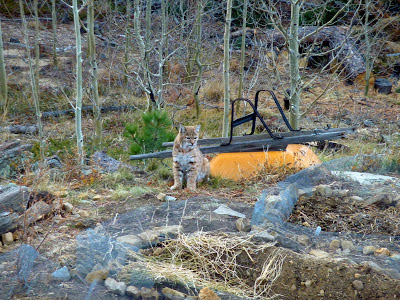The number one question I heard all summer from gardening clients and at the Evergreen Farmer’s Market Master Gardener booth was “what won’t the deer and elk eat?” The answer I finally arrived at was “anchovies.”
Colorado and her foothills are unique in its diversity of wildlife. That’s the beauty and the challenge of it, particularly for gardeners. I revel in the wildlife community, and its impact and softening on me daily is worth a few lost posies. Native Americans believe in the power of the animal kingdom and since we are all part of the same community, I think it’s critical we soften our attitudes towards those we consider invaders. While your garden may not be completely ungulate resistant, what a wonderful opportunity to view and enjoy our local species by offering them occasional snacks!
This bull elk wandered through my driveway during rut, herding his ladies ahead of him, and for obvious reasons I stayed in my car until he moved through. They devoured plants in their path, but it’s autumn and, shoot, plants need winter pruning anyway!
My little red fox friend decided that caching his catch in my upper deck container was a good idea. All the time I thought he was there to smell my lobelia before the first freeze!"
Every region and climate in North America has its own set of challenges –in Florida, it’s hurricanes and for California, it’s earthquakes. While Colorado has its share of everything from drought and wildfires to deep snowpack, how lucky we are we have opportunity to view and cherish our wildlife. Got elk? Get a camera and share the beauty of your interaction!











